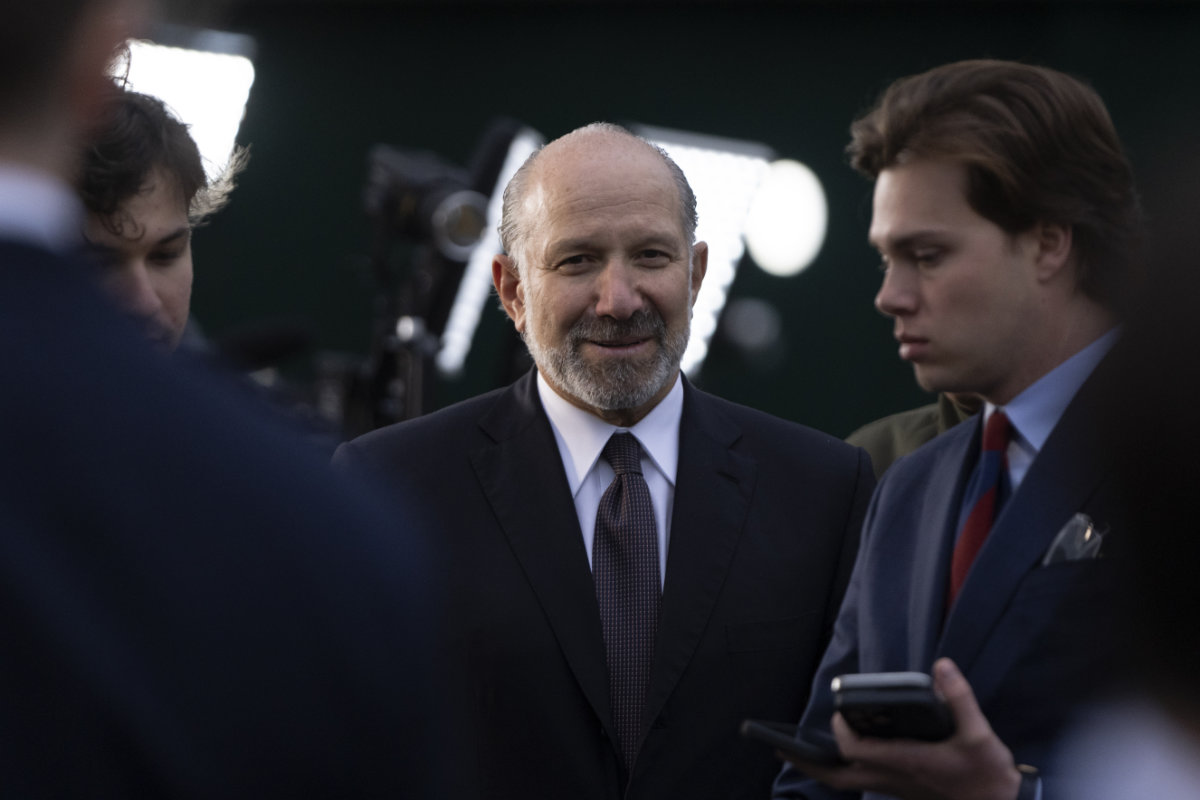WASHINGTON: Wall Street led a global markets bloodbath Thursday as countries around the world reeled from President Donald Trump’s trade war, while the White House insisted the US economy will emerge victorious.
The S&P 500 dropped 4.8 percent in its biggest loss since 2020. The tech-rich Nasdaq plummeted 6.0 percent and the Dow Jones 4.0 percent.
Shock waves also tore through markets in Asia and Europe in the wake of Trump’s Wednesday announcement, while foreign leaders signaled readiness to negotiate but also threatened counter-tariffs.
Trump slapped 10 percent import duties on all nations and far higher levies on imports from dozens of specific countries — including top trade partners China and the European Union.
Separate tariffs of 25 percent on all foreign-made cars also went into effect and Canada swiftly responded with a similar levy on US imports.
Stellantis — the owner of Jeep, Chrysler and Fiat — paused production at some Canadian and Mexican assembly plants.
Trump dismissed the turmoil, insisting to reporters as he left for a weekend at his Florida golf resorts, that stocks will “boom.”
The 78-year-old president says he wants to make the United States free from reliance on foreign manufacturers, in a massive economic reshaping that he likened to a medical procedure.
“It’s what is expected,” he said of the market reaction. “The patient was very sick. The economy had a lot of problems.”
“It went through an operation. It’s going to be a booming economy. It’s going to be amazing.”
Trump ‘knows what he’s doing’
Amid howls of protest abroad and from even some of Trump’s Republicans, Commerce Secretary Howard Lutnick urged patience.
“Let Donald Trump run the global economy. He knows what he’s doing,” he said on CNN. “You’ve got to trust Donald Trump in the White House.”

Commerce Secretary Howard Lutnick leaves after doing a television interview outside the White House on April 2, 2025, in Washington. (AP)
But China demanded that the tariffs be immediately canceled and vowed countermeasures, while France and Germany warned that the EU could hit back at US tech firms.
French President Emmanuel Macron called for suspending investment in the United States until what he called the “brutal” new tariffs had been “clarified.”
The 27-nation EU and other countries also sought to negotiate as they refrained from immediate retaliation.
Italy’s Prime Minister Giorgia Meloni called for “frank discussion on the substance with the Americans.”
Beijing said it was “maintaining communication” with Washington over trade issues, and EU trade chief Maros Sefcovic planned to speak with US counterparts on Friday.
However, Brazil’s president vowed to take “all appropriate measures.”
Gold — a safe-haven investment — hit a new record price, oil fell and the dollar slumped against other major currencies.
The head of the World Trade Organization, which helps manage global trading, warned the upheaval may lead to contraction of “one percent in global merchandise trade volumes this year.”
’You can’t fight the US’
Trump is brushing off warnings about triggering a global economic slowdown and politically damaging price rises at home.
Republican Senator Mitch McConnell broke ranks with Trump, slamming tariffs as “bad policy.”
“Preserving the long-term prosperity of American industry and workers requires working with our allies, not against them,” he said.
It remains unclear to what extent Trump is using the tariffs shock to engage in negotiations on trade deals — or whether he really intends to try to force all competitors to play by US rules.
He said he would negotiate “as long as they are giving something that is good.”
But earlier, White House spokeswoman Karoline Leavitt told CNN that the president made it clear that “this is not a negotiation.”
And Lutnick also struck a hard line, saying, “You can’t really fight with the United States.”
“You’re going to lose. We are the sumo wrestler of this world.”
Trump reserved some of the heaviest blows for what he called “nations that treat us badly.”
That included an additional 34 percent on goods from China — bringing the new added tariff rate there to 54 percent.
The figure for the European Union was 20 percent, and 24 percent on Japan.
For the rest, Trump said he would impose a “baseline” tariff of 10 percent, including on another key ally, Britain, which will come into effect on Saturday while the higher duties will kick in on April 9.


























